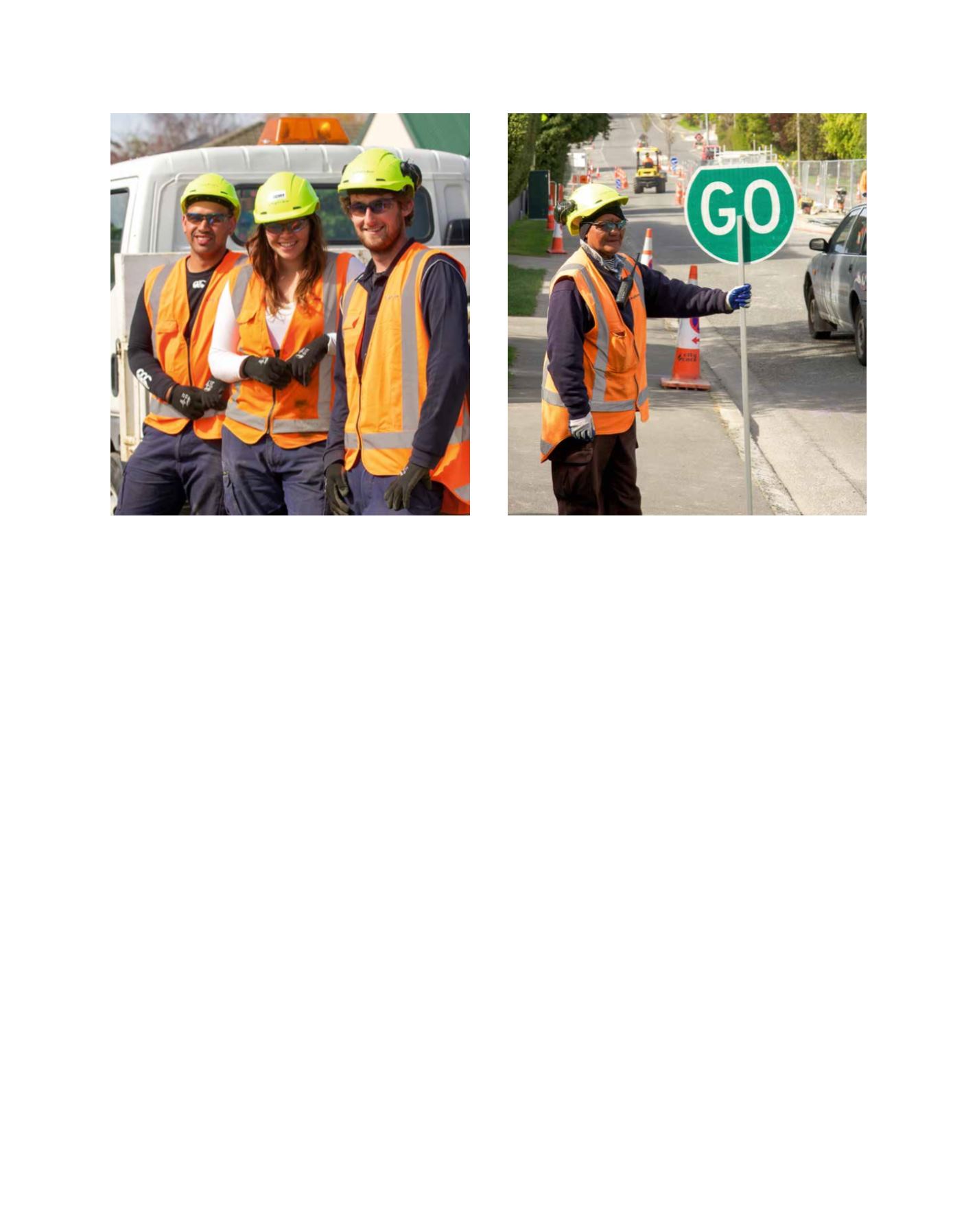

[
] 69
Institute of Technology) was introduced in 2014. The
initiative covers tuition fees for women studying towards a
Level 1-4 Trades programme at CPIT. Female enrolments
in trades training at CPIT increased from 50 in 2011 to
414 in 2014.
10
The number of women working in construction in
Canterbury is increasing. Women made up 17.3 per cent of
construction workers in Canterbury in March 2016 (up from
14.5 per cent two years before), and nationally there were
2,400 more women employed in construction in March 2016
than at the same time the previous year.
11
Women made up
13.5 per cent of construction workers nationally in March
2016, up from 11.7 per cent two years before.
12
The experiences gained through these actions in Canterbury
are being used to inform national efforts to promote the
recruitment and retention of women in occupations where
they are underrepresented.
Building on the work in Canterbury, the Ministry for
Women has embarked on a project to raise awareness
among small to medium-sized enterprises of the benefits
of flexible and diverse work environments. With a focus on
skill gaps in the STEM and trades industries, the Ministry
for Women facilitated three regional workshops in 2016 on
the theme ‘Getting and Keeping Good Workers’. A toolkit
has been developed that provides practical resources for
business owners, including information on the support
available from government agencies.
New Zealand is proud to continue its leadership role
on gender equality in the international community. It
is committed to the Beijing Declaration and Platform
for Action, the Vienna Declaration and Programme for
Action, the International Conference on Population and
Development, United Nations Security Council Resolution
1325 and subsequent resolutions relating to the women,
peace and security agenda. New Zealand’s term on the
United Nations Security Council offers an opportunity to
contribute to the Council’s efforts to address the gendered
impacts of conflict and the role of women in conflict
prevention, protection and sustainable peace.
Achieving the Sustainable Development Goals (SDGs) will
rely on action at the global level. New Zealand will contrib-
ute through a combination of domestic action, international
leadership on global policy issues, and supporting countries
through the New Zealand Aid Programme. This will require
a cross-government effort. New Zealand government agen-
cies are reviewing the goals and their alignment with existing
government priorities. This analysis will inform a discussion
on how New Zealand focuses its efforts.
The private sector and civil society can also help reach the
goals. Already a number of non-governmental organizations
and businesses are considering how their work helps, and are
engaging productively with government agencies.
The New Zealand Aid Programme is well-positioned to
support New Zealand’s partner countries’ achievement of
the SDGs, its main focus being the Pacific region where
it seeks to develop shared prosperity and stability. New
Zealand integrates women’s empowerment and gender
equality across all investment priorities and a number of
investments specifically target gender outcomes. As well
as women’s parliamentary representation and building the
understanding that gender equality is essential to economic
growth and sustainable development, these priorities
include reducing violence against women, sexual and
reproductive health and working with partner agencies.
The experiences gained in Canterbury are being used to promote the recruitment
and retention of women in occupations where they are underrepresented
New Zealand is proud to continue its leadership role on gender equality in the
international community
Image: Ministry for Women and the Stronger Christchurch Infrastructure Rebuild Team
Image: Ministry for Women and the Stronger Christchurch Infrastructure Rebuild Team
G
ender
E
quality
and
W
omen
’
s
E
mpowerment
















